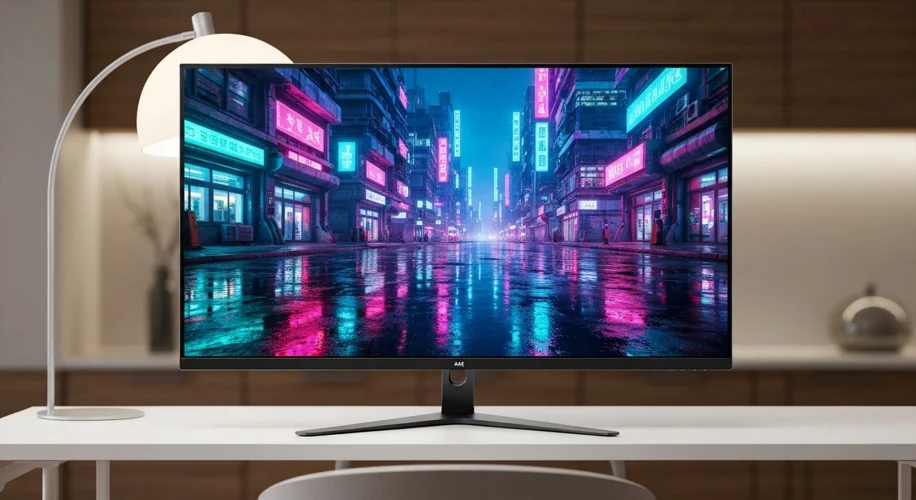In the grand tapestry of technological evolution, where each innovation builds upon the last, Samsung’s recent unveiling of a colossal 37-inch 4K monitor, emblazoned with the audacious claim, “5 Inches can change everyday life,” marks a significant new chapter. This isn’t just a screen; it’s a portal, a testament to humanity’s relentless pursuit of more immersive and expansive visual experiences, echoing a journey that began with flickering cathode rays and ended, for now, with pixels so fine they’re almost invisible.
For decades, the television and computer monitor have been silent observers of our lives, evolving from bulky, monochrome boxes to sleek, vibrant displays. Think back to the days of television’s infancy, a marvel of its time, broadcasting grainy black and white images into living rooms. The advent of color television in the mid-20th century was a revolution, transforming passive viewing into a more engaging spectacle. Then came the monitors, initially utilitarian tools for interacting with nascent computer systems. Their primary function was to present data, often in stark green or amber text on a black background.
As computing power grew, so did the ambition for visual fidelity. The transition from cathode ray tubes (CRTs) to flat-panel displays – first plasma, then LCD, and finally LED and OLED – was a technological arms race. Each step brought higher resolutions, wider color gamuts, and thinner profiles. The quest for High Definition (HD) and then 4K Ultra HD was a relentless march, driven by a public increasingly eager for sharper, more lifelike images. This desire was fueled by Hollywood’s own push for cinematic quality, creating a feedback loop where consumers demanded what they saw on the big screen, and manufacturers scrambled to deliver it to their homes.
The 37-inch 4K monitor by Samsung is a direct descendant of this lineage. It’s a product of a world that has become accustomed to the clarity and depth of 4K, a world where the difference between a blurry image and a crystal-clear one can fundamentally alter how we perceive information and entertainment. The phrase “5 Inches can change everyday life” speaks to the profound impact that such a significant increase in screen real estate can have. Imagine multitasking, where an entire spreadsheet, a video conference, and a research document can coexist on a single screen without a hint of a compromise. Or consider the gamer, whose immersion is amplified by a panoramic view of their virtual world. For the creative professional, it offers an expansive canvas for design and editing, reducing the need to constantly zoom and pan.
This leap in monitor size and resolution is not merely an incremental upgrade; it’s a paradigm shift. It challenges the traditional separation between desktop computing and immersive home entertainment. Large-format displays have long been the domain of dedicated home theaters or specialized workstations. Samsung’s offering blurs these lines, bringing a cinematic and professional-grade experience into the everyday workspace or living room. It caters to a world that increasingly lives and works through its screens, where the quality and scale of that interaction matter more than ever.
The implications of this trend are far-reaching. As displays become larger and more capable, they will undoubtedly reshape our environments and habits. We might see a reduction in the need for multiple monitors, replaced by a single, dominant visual hub. The way we consume media, interact with information, and even collaborate professionally could be fundamentally altered. This colossal monitor, with its promise of transforming everyday life, is not just a product; it’s a harbinger of a future where our digital and physical worlds are more seamlessly integrated, and our visual experiences are richer and more expansive than ever before.
As we stand on the cusp of this new era of visual technology, Samsung’s 37-inch 4K monitor serves as a powerful reminder that the relentless pursuit of progress continues, pushing the boundaries of what we thought possible and forever changing the way we see the world.

